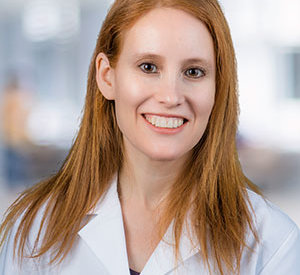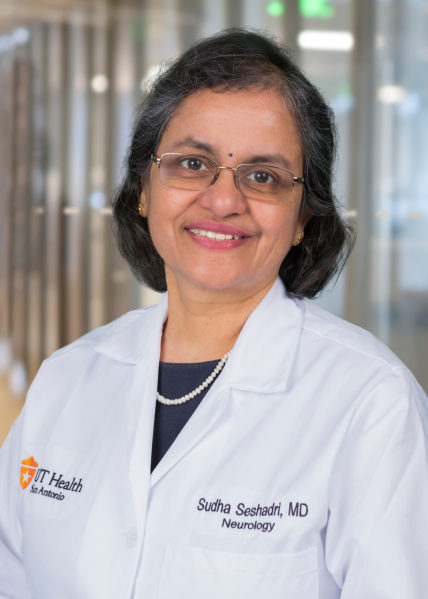In the war on cancer and other diseases including COVID-19, old drugs approved for other conditions are being studied for new purposes. It’s a strategy that will now be tested in Alzheimer’s disease with a drug called rapamycin.

A $2 million grant will enable a double-blind, placebo-controlled clinical trial in which 40 individuals with mild cognitive impairment or early Alzheimer’s disease will receive a daily dose of oral rapamycin (or for half the participants, a placebo) and undergo a regular battery of brain health assessments at the Glenn Biggs Institute for Alzheimer’s and Neurodegenerative Diseases, an institute of UT Health San Antonio.
The 16 brain workups will include cognition assessments, magnetic resonance images, positron emission tomography scans, and analysis of spinal fluid and blood markers.

The grant, announced Aug. 25, is from Part the Cloud, the Gates Foundation and the Alzheimer’s Association. Rapamycin has been extensively studied since the 2000s by UT Health San Antonio’s Sam and Ann Barshop Institute for Longevity and Aging Studies.
The drug, which gained U.S. Food and Drug Administration approval in 1999 for use in organ transplant recipients, improved memory function in mice that mimic Alzheimer’s disease, a Barshop Institute study found. Meanwhile, a pilot study conducted by Barshop Institute faculty in humans at the South Texas Veterans Health Care System showed rapamycin was safe and well tolerated in senior adults over eight weeks.
“We will now study its safety and value over 12 months in 40 persons with early Alzheimer’s disease and mild cognitive impairment,” said Sudha Seshadri, MD, study principal investigator. “Because rapamycin is approved by the Food and Drug Administration, is manufactured by industry and is already used in patients, it could be employed very soon in Alzheimer’s disease if the results of this and larger clinical trials are promising.”
Dr. Seshadri, founding director of the Biggs Institute, is a professor of neurology in the Joe R. and Teresa Lozano Long School of Medicine at UT Health San Antonio.
“Disappointments with new medications for Alzheimer’s disease resulted in part because we don’t fully understand all the biological pathways that are disrupted in dementia,” said Mitzi Gonzales, PhD, ABPP-CN, study co-principal investigator. She is a neuropsychologist and assistant professor with the Biggs Institute.
“This disease varies widely in individuals, and we believe multiple pathways can lead to the same clinical presentation,” Dr. Gonzales said. “Rapamycin appears to have multiple mechanisms of action, and we are excited to study it with the hope to see clinically significant change in our clinical trial participants.”
In a ground-breaking study published in Nature in 2009, Barshop Institute investigators and teams at two other institutions reported that rapamycin was the first drug intervention to lengthen life span in middle-aged mice. Until that time, calorie restriction had been the lone intervention shown to extend the mouse life span.
“The strongest risk factor for Alzheimer’s disease is being older,” Dr. Seshadri said. “The older the population, the larger the proportion of people who have Alzheimer’s. Given that rapamycin is one of the few agents that is effective in animal models at increasing longevity, we believe it is a very promising agent to study in this age-related disease.”
In preclinical lab studies, rapamycin improved functions specifically related to dementia, including the health of memory-forming synapses. The drug also reduced inflammation and improved blood flow in mice.
“It may be that two or three things are moved in a positive direction, and that any drug that only acts on one might not be quite as effective,” Dr. Seshadri said.
Part the Cloud, Gates Foundation and Alzheimer’s Association reviewers actually extended the proposed study from six months to one year at the Biggs Institute because of the study’s strong rationale and potential clinical merit. The team will observe whether the drug improves participants’ cognition and will seek to understand the mechanisms by which it does so.
The current study is considered an early phase two trial. “The most important aim is to make sure that people can take rapamycin for 12 months and tolerate it safely,” Dr. Gonzales said. “If it shows safety and benefit, we may take it to a larger trial.”
Dr. Seshadri joined UT Health San Antonio in 2017 from Boston University, where she continues as a senior investigator with the Framingham Heart Study. She said San Antonio is known in scientific circles for its significant contributions to understanding rapamycin.
Barshop and Biggs institute faculty have made it possible to translate rapamycin discoveries from the laboratory to animal models and now to clinical trials.
“It’s not very often that a university gets the chance to move something to humans after studying it in animals,” Dr. Seshadri said.
Part the Cloud, established by Michaela “Mikey” Hoag after losing her father to early-onset Alzheimer’s disease, is partnering with the Alzheimer’s Association and the Gates Foundation. The total research investment is now $60 million.
“Reviewers said we have a well thought-through proposal by an experienced and competent group of investigators,” Dr. Seshadri said. “We are pleased to bring this clinical trial to San Antonio and to the families of South Texas.”
Read related stories about this interesting drug, rapamycin:
Study: Rapamycin prevents age-related brain vascular deterioration
The Long School of Medicine at The University of Texas Health Science Center at San Antonio is named for Texas philanthropists Joe R. and Teresa Lozano Long. The school is the largest educator of physicians in South Texas, many of whom remain in San Antonio and the region to practice medicine. The school teaches more than 900 students and trains 800 residents each year. As a beacon of multicultural sensitivity, the school annually exceeds the national medical school average of Hispanic students enrolled. The school’s clinical practice is the largest multidisciplinary medical group in South Texas with 850 physicians in more than 100 specialties. The school has a highly productive research enterprise where world leaders in Alzheimer’s disease, diabetes, cancer, aging, heart disease, kidney disease and many other fields are translating molecular discoveries into new therapies. The Long School of Medicine is home to a National Cancer Institute-designated cancer center known for prolific clinical trials and drug development programs, as well as a world-renowned center for aging and related diseases.
The University of Texas Health Science Center at San Antonio, also referred to as UT Health San Antonio, is one of the country’s leading health sciences universities and is designated as a Hispanic-Serving Institution by the U.S. Department of Education. With missions of teaching, research, patient care and community engagement, its schools of medicine, nursing, dentistry, health professions and graduate biomedical sciences have graduated more than 37,000 alumni who are leading change, advancing their fields, and renewing hope for patients and their families throughout South Texas and the world. To learn about the many ways “We make lives better®,” visit www.uthscsa.edu.
Stay connected with The University of Texas Health Science Center at San Antonio on Facebook, Twitter, LinkedIn, Instagram and YouTube.


